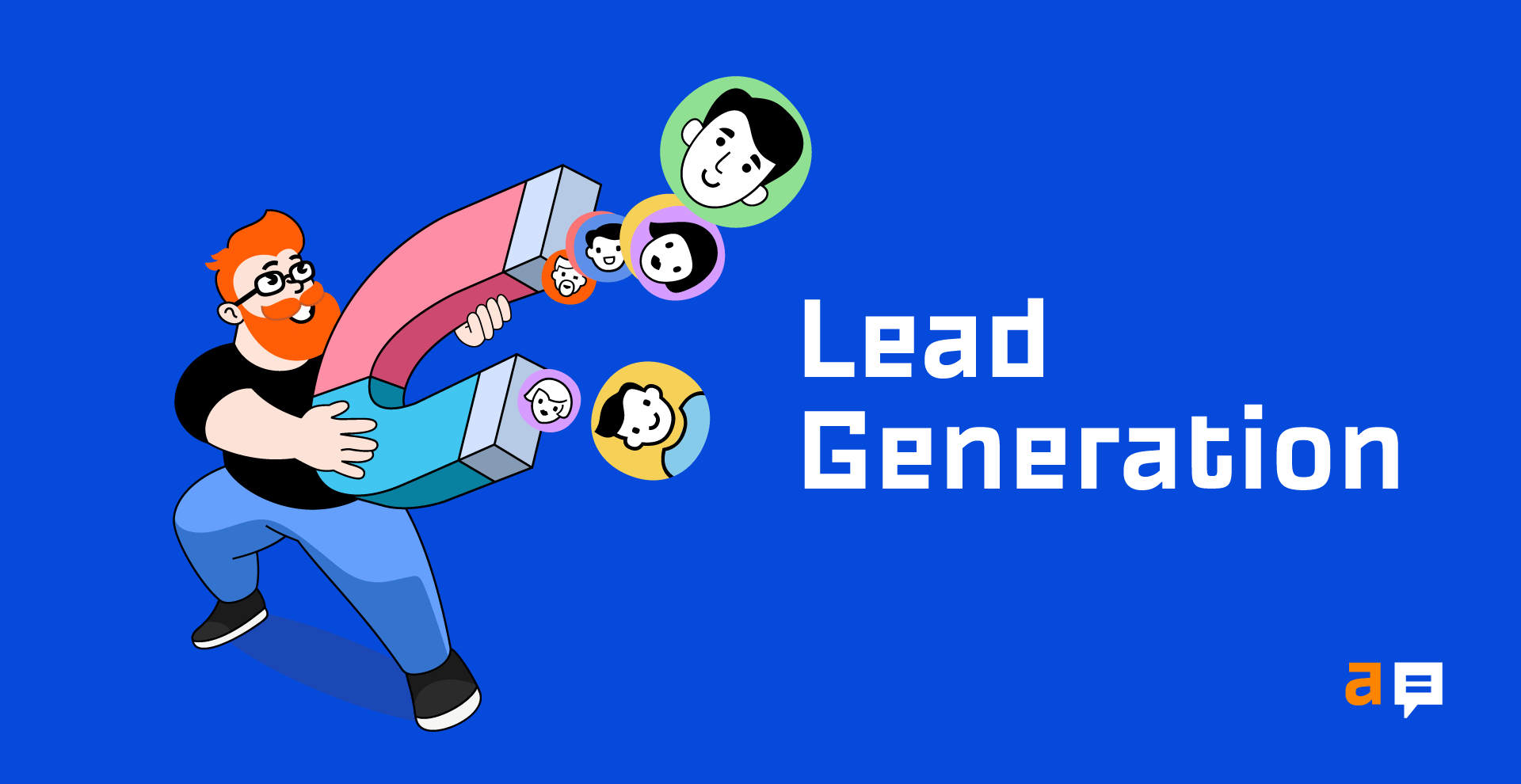By Patricia Soleta on Feb 26, 2024 10:27:08 AM
In today's competitive business landscape, a successful lead generation strategy is vital for sustained growth and profitability. Generating leads involves capturing the interest of potential customers and nurturing them through the sales funnel until they are ready to make a purchase. However, developing an effective lead generation strategy requires careful planning, execution, and continual optimization. In this comprehensive guide, we'll delve into the key components of a successful lead generation strategy and provide valuable insights to help you achieve your business objectives.
Understanding Lead Generation
At its core, lead generation is the process of identifying and attracting potential customers who have shown an interest in your products or services. It involves various tactics and channels aimed at initiating and fostering relationships with prospects, ultimately leading to conversions. Understanding the nuances of lead generation is essential for developing a strategy that aligns with your business goals and resonates with your target audience.
Defining Your Target Audience
The foundation of any successful lead generation strategy lies in knowing your target audience inside out. Conduct thorough market research to identify your ideal customers' demographics, preferences, pain points, and buying behaviors. This information will enable you to tailor your messaging, offers, and channels to effectively reach and engage with your target audience.
Setting Clear Goals and Objectives
Before embarking on your lead generation journey, it's essential to establish clear and measurable goals. Whether your objective is to increase website traffic, generate qualified leads, or boost sales conversions, defining specific, achievable goals will provide focus and direction for your strategy. Additionally, set key performance indicators (KPIs) to track and evaluate the success of your lead generation efforts over time.
Choosing the Right Lead Generation Tactics
With a myriad of lead generation tactics available, selecting the most appropriate ones for your business can be daunting. Evaluate your target audience, industry, and resources to determine which tactics are best suited to your objectives. Whether it's content marketing, email campaigns, social media advertising, search engine optimization (SEO), or a combination of these, focus on tactics that align with your audience's preferences and behavior.
Creating Compelling Content
Compelling content lies at the heart of any successful lead generation strategy. Whether it's blog posts, ebooks, webinars, videos, or infographics, creating valuable, relevant content is essential for attracting and engaging prospects. Tailor your content to address your audience's pain points, provide solutions to their challenges, and showcase the unique value proposition of your products or services.
Implementing Lead Capture Mechanisms
Once you've attracted prospects to your website or landing pages, it's crucial to implement effective lead capture mechanisms to capture their information. Use strategically placed opt-in forms, call-to-action buttons, and gated content offers to encourage visitors to provide their contact details in exchange for valuable resources or incentives. Additionally, leverage tools such as lead magnets, pop-up forms, and exit-intent overlays to maximize conversion opportunities.
Nurturing Leads Through the Sales Funnel
Lead generation doesn't end with capturing contact information; it's equally important to nurture leads through the sales funnel until they are ready to make a purchase. Develop targeted email nurture sequences, personalized content recommendations, and follow-up strategies to engage with leads at each stage of their buyer's journey. Provide relevant content, address objections, and build trust to move prospects closer to conversion.
Analyzing and Optimizing Performance
Continuous optimization is key to maximizing the effectiveness of your lead generation strategy. Regularly monitor and analyze the performance of your tactics, campaigns, and channels against your established KPIs. Identify areas of improvement, A/B test different variables, and iterate on your approach to refine and optimize your strategy over time. By leveraging data-driven insights, you can identify what works best for your audience and allocate resources accordingly.

Nowadays, your audience no longer wants you to buy their attention, they want you to earn it.
This means lead generation strategies need to be revamped across the industry to better meet the needs of target markets.
Let’s discuss 4 L’s of Lead Gen strategy to help you convert visitors into leads.
The 4 L's of a Lead Generation Strategy
Approximately 96% of business-to-business customers want content from industry thought leaders to inform their buying decisions. Creating compelling content is your key to establishing yourself as that go-to, educational leader in your industry. Compelling content plays a huge role in generating leads. This includes the tools used to generate traffic, such as your blog, SEO, PPC, and social platforms.
Let's unpack the four L's of lead generation.
1. Lead Capture
About half of your visitors will never return to your site if you do not adequately capture some bit of information from them. A working email address is the best thing a marketer can ask for here, but visitors are not always willing to give this kind of personal information up. Call-to-action (CTA) buttons like "Sign Up Here" have practically become synonymous with "We are Going to Spam You", which is why marketers need to find new ways to obtain this information.
2 golden rules are taken into account:
- We must give before ask
- Every step of the marketing process (advertisements and promotions) must be valuable in and of itself
2. Lead Magnets
Lead magnets are tools that provide value for your visitors in exchange for their contact information. A successful client lifecycle requires optimizing the process for converting visitors into leads. Unfortunately, a hole exists between the traffic generation phase and the lead generation phase that often results in one-time visitors who neglect your attempts to capture their information and never hear from you again. You can seal up that hole with lead magnets. Businesses use lead magnets such as email opt-ins, subscriptions, and social media follows to fish for some sign of interest from their site's visitors.
The goal of this is to receive permission from visitors to follow up. Some examples of lead magnets include free:
- Training video series
- Free trial
- Webinars
- eBooks
- White papers
- A set of bonus tips
- An interview with an expert on a relevant topic

.3. Landing Page Conversion Techniques
Another huge asset to your business when trying to convert visitors into leads are landing pages. This can be any page that someone lands on after clicking on an advertisement or other online marketing elements. It is also important to note that landing pages exist separately from your company's website, and typically are used as a tool for a single marketing campaign.
Landing pages serve the dual purpose of capturing leads and warming up potential customers. Both of these are essential stepping-stones before moving a customer further down your sales funnel.
Landing pages have one call-to-action in mind. Instead of overwhelming visitors with information regarding your business and all the products and services you offer, it is essential that you narrow the focus down to one specific goal in mind. Be sure to cut out any excess information that isn't essential to the campaign, and be sure to include only one form or CTA link for them to utilize.
The most important element of your landing page is that it delivers the promise that your ad source made. If your ad says "Get 50% off computers here," you need to reassure the visitor as soon as possible on your landing page that you will deliver that.
One way to do this is to make the CTA on your ad source the headline on your landing page. Another way is to make sure the font, coloring, and images used in your ad are duplicated on your landing page to some degree.
4.Lead Scoring
Lead scoring is a component of marketing automation software that helps prioritize your leads according to their levels of engagement with your inbound marketing content and ultimately help you figure out who is ready to buy. It can also help you identify what they are interested in if setup correctly.
This technique is used to quantify interactions that prospects have with your content by assigning points for different types of engagement. An example of the different types of engagements and their point values might look like this:
- Download an ebook: Add 5 points
- Watch a product overview video: Add 7 points
- Job role not a good match: Deduct 10 points
- Fill out opt-in form: Add 7 points
- Unsubscribe from a list: Deduct 7 points
Lead scoring provides your company with real-time feedback on how responsive your leads are to your marketing efforts. It can also indicate people who are ready to buy from you, but haven't yet been in contact with you.
This point-based approach to recognizing and analyzing a company's hottest leads will save your business time and money when reaching your target market and capitalizing on sales opportunities. With your hottest leads identified, your business can communicate with these leads confidently knowing that they are already aware of and interested in your business.
Lead generation plays a role in every business's marketing strategy. Think about how many business sites you have visited since the dawn of the internet that you will never return to again. Not only did those businesses fail to capture your attention at that given time, but they failed to reconnect with you in the future.
With your content in place, your business can begin using lead magnets, lead capture, effective landing page design, and lead scoring to optimize lead generation rates and create an overall better-performing inbound marketing strategy.
In conclusion, creating a successful lead generation strategy requires a holistic approach that encompasses understanding your audience, setting clear objectives, choosing the right tactics, creating compelling content, implementing effective lead capture mechanisms, nurturing leads through the sales funnel, and continuously optimizing performance. By following these key principles and adapting to changing market dynamics, you can develop a robust lead generation strategy that drives sustainable growth and success for your business.




comments